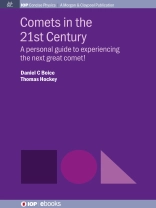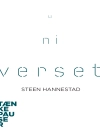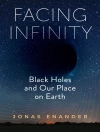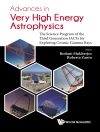The purpose of this book is to bring comets into the living rooms of general households, to familiarize politicians with these fascinating objects when they ponder funding for comet research, to teach children and young students, and to provide teaching tools about these very unusual objects in our skies. The presentation is very comprehensive in its description of orbits around the Sun, the development of the coma (escaping atmosphere) from a comet’s nucleus and source of all activities, various types of comet tails, trailing as well as leading as a comet orbits our Sun, ancient beliefs and explanations of these phenomena and the most recent discovery of the first interstellar comet.
Inhaltsverzeichnis
Foreword
Preface
Author Biographies
1. Introduction
2. Roller Coaster Comets
2.1 The Paths of Comets
2.2 Two Kinds of Comets
2.3 Celestial Clockwork
2.4 A Universe in Motion
2.5 The Gravity of the Situation
2.6 Looping Comets
2.7 Orbits of Your Own
3. What Comets Are All About
3.1 Parts of a Comet
3.2 What is a Comet Made of?
3.3 More on the Comet Nucleus
3.4 Comet Scene Investigation (CSI) Using Chemical Fingerprints
3.5 The Demise of Comets
3.6 The Origin of Comets
3.7 A Visit to a Comet
4. Comet Crashes
4.1 What if?
4.2 The Comets Come to Earth
4.3 The Killer Comet
5. Observing Comets
5.1 Eye on a Comet
5.2 Where to Go?
5.3 When to Look?
5.4 Expectations
6. Hunting Comets
6.1 Who Discovers Comets?
6.2 Where is Our Comet?
6.3 How Bright a Light?
6.4 Eureka! I’ve Found a Comet!
6.5 Starting Your Comet Quest
6.6 Epilogue
Appendices
A. Recipes for Teachers
B. Approximate Dates for Some Famous Meteor Showers
C. Typical Comet Visibility Rates
D. The Brightest Comets Since 1935
E. Notable Comets in History
F. Books on Historical Comets
G. Intermediate and Advanced Books on Comets
Glossary
Über den Autor
Daniel C Boice is the principal astronomer at Scientific Studies and Consulting in San Antonio, Texas. His professional activities include more than 75 peer-reviewed research papers and several hundred conference reports. In 2000, he became a Fellow of the Royal Astronomical Society. Thomas Hockey is a professor of astronomy at the University of Northern Iowa. He has written seven other books including Galileo’s Planet and How We See the Sky, and hewas Editor-in-Chief of the award-winning Biographical Encyclopedia of Astronomers.












